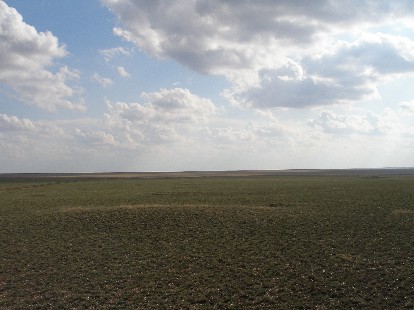September 2009/2 - Turgay Discovery
Main menu
- Main page
- News
- Project Keepers Geoglyphs Turgay
-
Our expeditions
- Expedition 2007
- Expedition 2008
- Expedition 2009
- Expedition 2014
- Expedition 2015
- Expedition 2016
-
Working materials
- Presentation Turgay Discovery
- Working hypothesis
- Base on these geoglyphs
- Library
- Scientific section
- Interview
- Multimedia content
- Internet-resources about Turgay
- Contacts
September 2009/2
In 2009 Kostanai regional specialist-
Besides there, the object identical to the Ushtorgai square was idenitfied: a line consisting of 23 embankments in the form of burrows which we had planned to investigate for a long time. The length of the Zhitikara line is 670 meters.
Having arrived, we started research of the remainder of the settlements. Settlements were stretched by a thin line along the Shortandy river to an extent of more than 10 kilometers.
The remainder of the settlements were represented by overgrown grass and hillocks. The outlines of square skeletons of houses were traced. Scanning objects with a metal detector allowed dating the settlements. Splinters of pig-
The settlements were probably those of the first prospectors -
Having finished the settlement researches, we moved along through the river and arrived at mountains to explore the Zhitikara line. The line is located on a flat top of a shallow mountain relief. The local soil differed considerably from where the Ushtogai square was located. The poor vegetation had affected the safeties of the embankments worse than in Ushtogai. Wind and water erosion had considerably reduced the height of the embankments, though the diameter was comparable with that of Ushtogai. The principle of the embankments' construction is identical to Ushtogai. All were equally spaced and consist of soil collected in the district. Having scanned the area with a metal detector and having investigated adjoining territories, we discovered nothing among all the embankments, as was the case for the Ushtogai square. The use of geo-
Within five kilometers of this area, Sergey discovered some medieval burial places, possibly dating to times of the Gold horde or the Nogajsky horde. Large stones shaped small burrows in a kind of fence. Alongside were two burrows with big diameters with tumble-
All the same, we found a settlement of an epoch of bronze. Sergey recollected that his friend Oleg Starchenko had collected a set of fragments comprising ceramics and bones on the bank of the river Zhelkuar in the mid-



